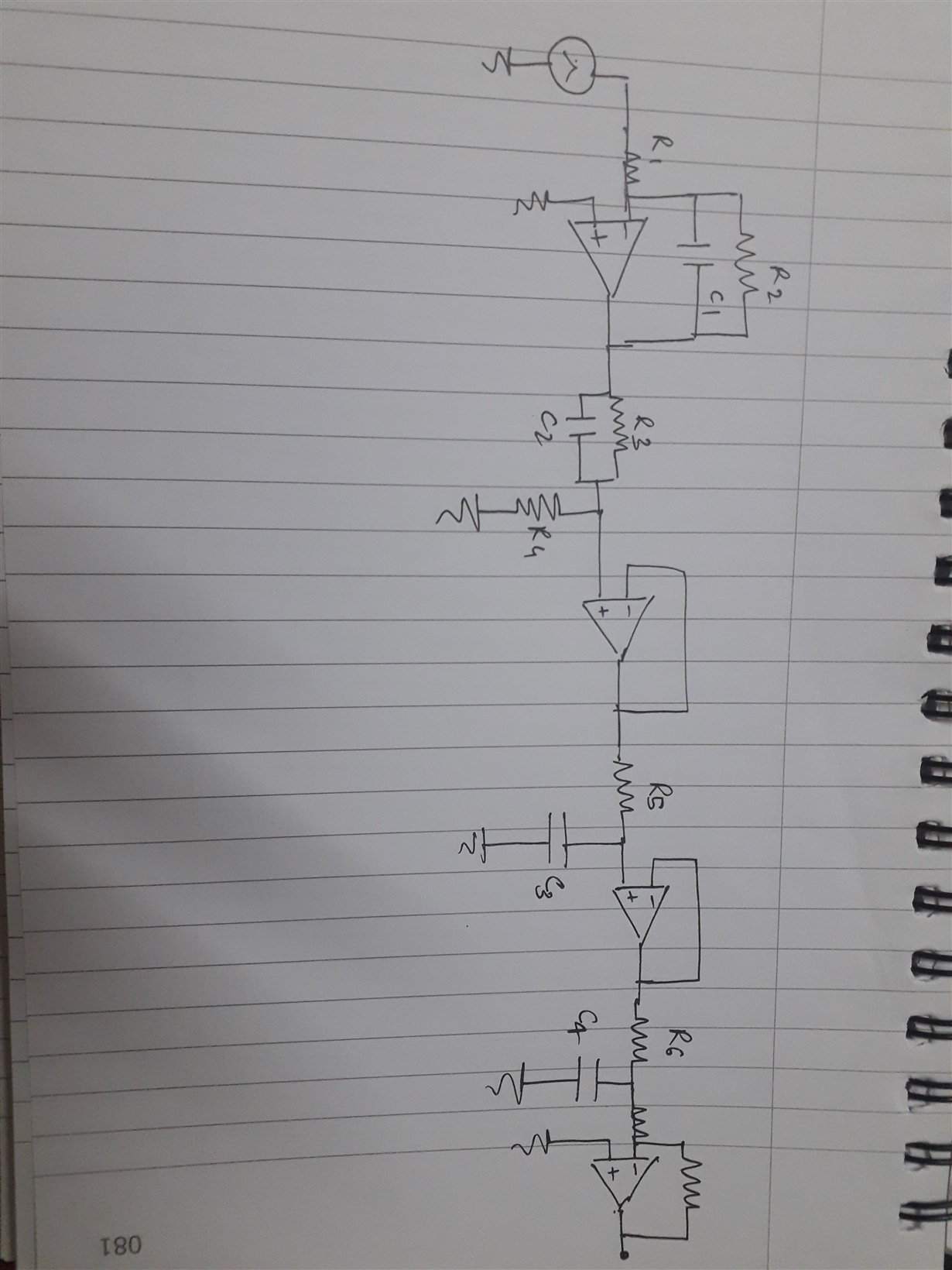How can I calculate the noise of a circuit with several opamp stages cascaded...I have followed TI's precision lab videos for noise calculations but it's not clear from those what to do when there are several opamp stages cascaded together. Can some one please just list out the steps I should follow for calculation of noise of this circuit, it would be really really helpful. I have looked all over but I couldn't find any source that gives information on how noise adds up in a circuit such as this. I have attached a pic for reference.
I am basically confused about whether I should go stage by stage, as in consider noise of one stage as input to other, multiplied by the gain, if any or consider the entire circuits overall gain and bandwidth for noise calculations. In that case, how do I add the thermal noise and opamp voltage noises? Any help is greatly appreciated.
Please list out the steps I should follow for noise calculations.
Thanks in advance



